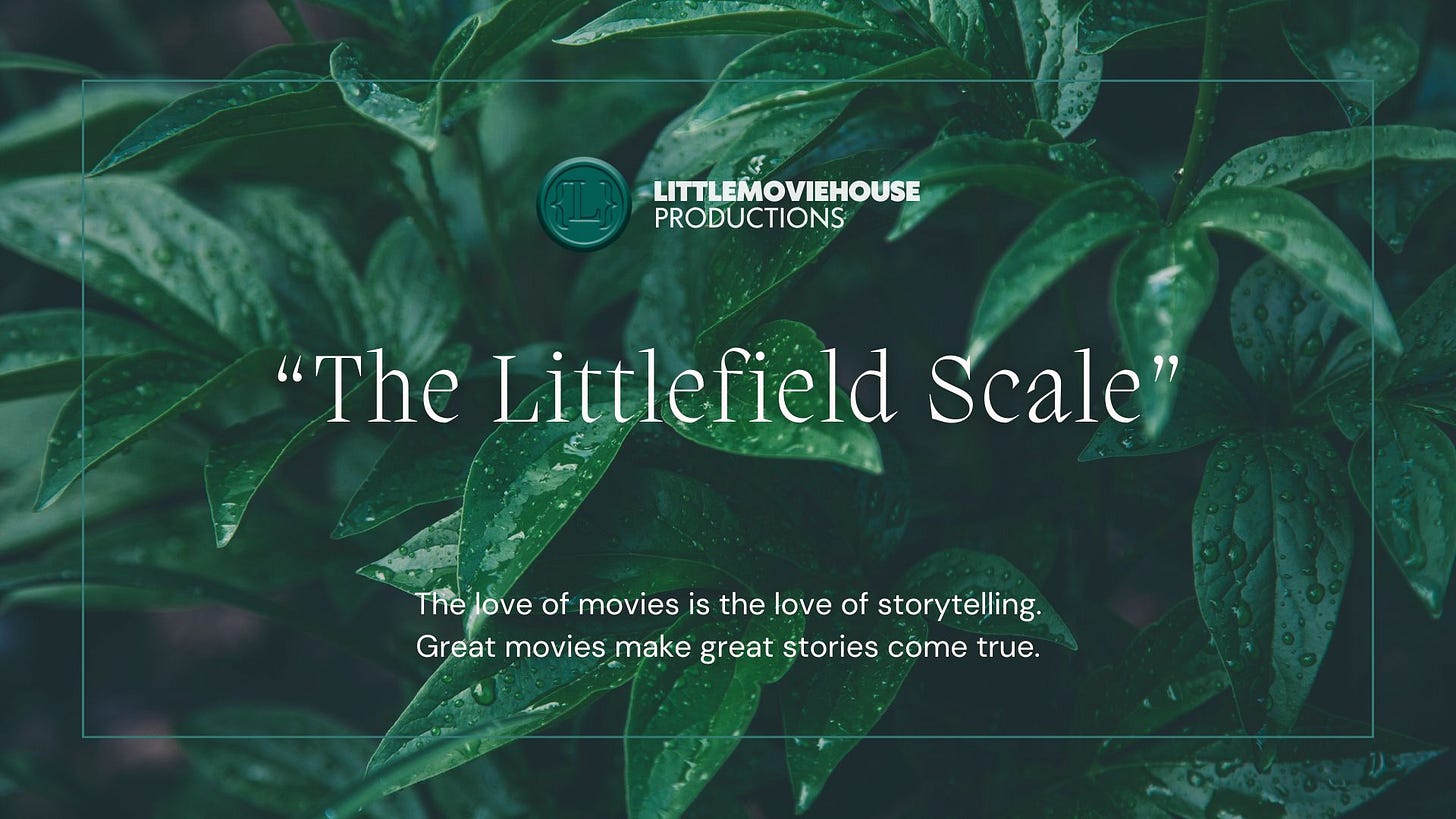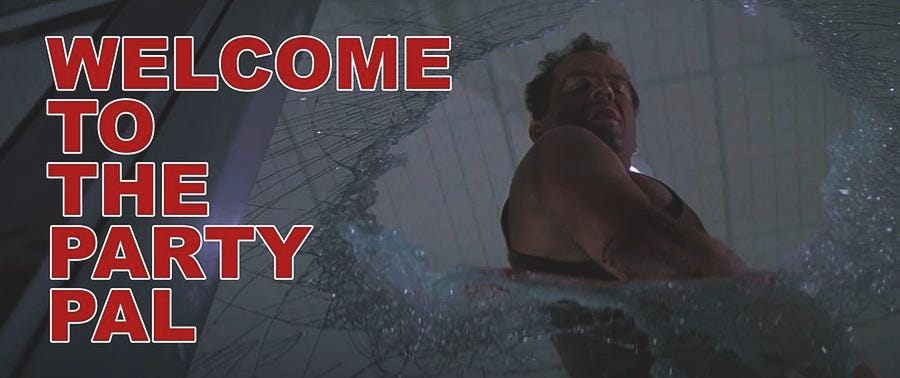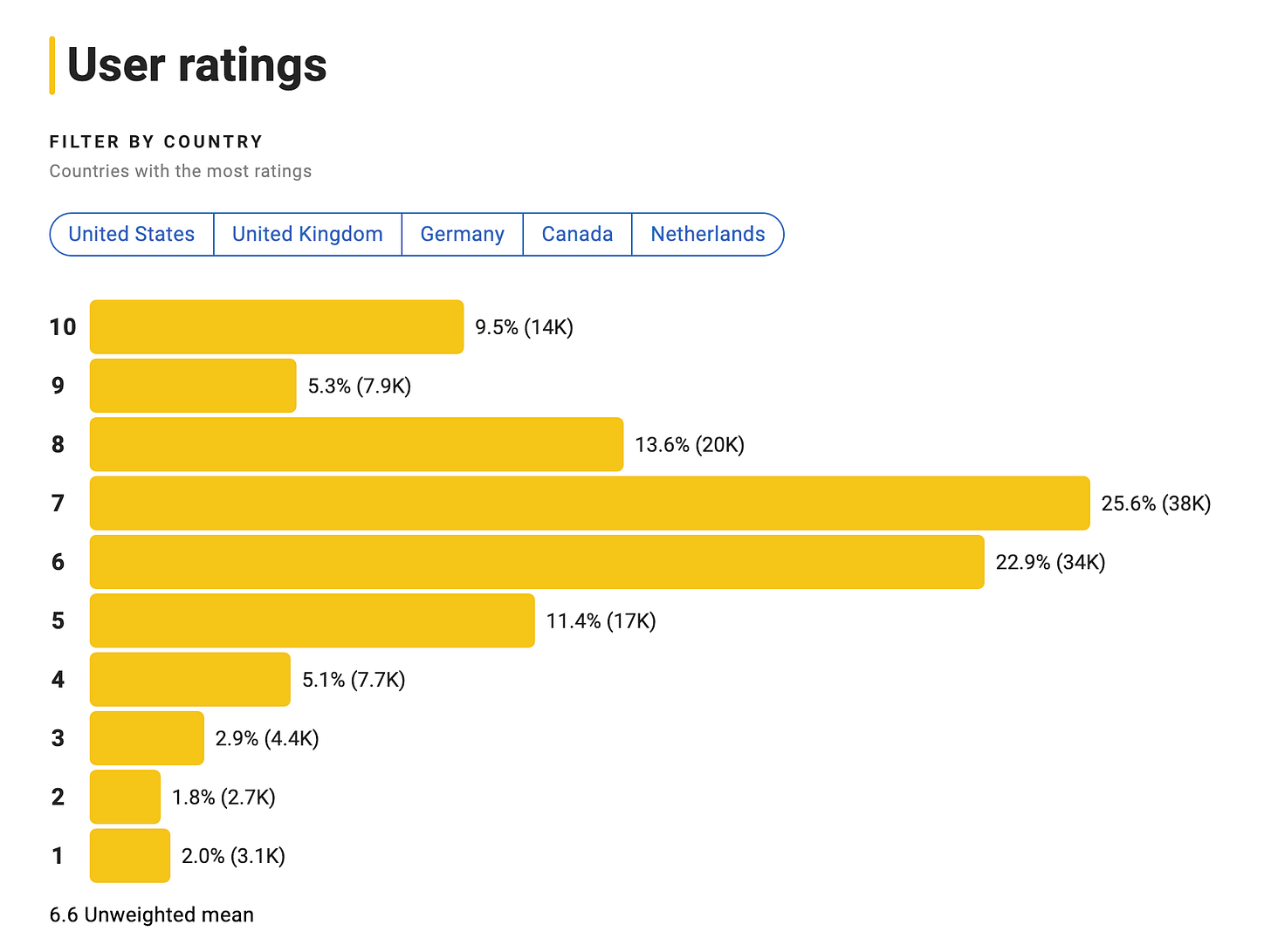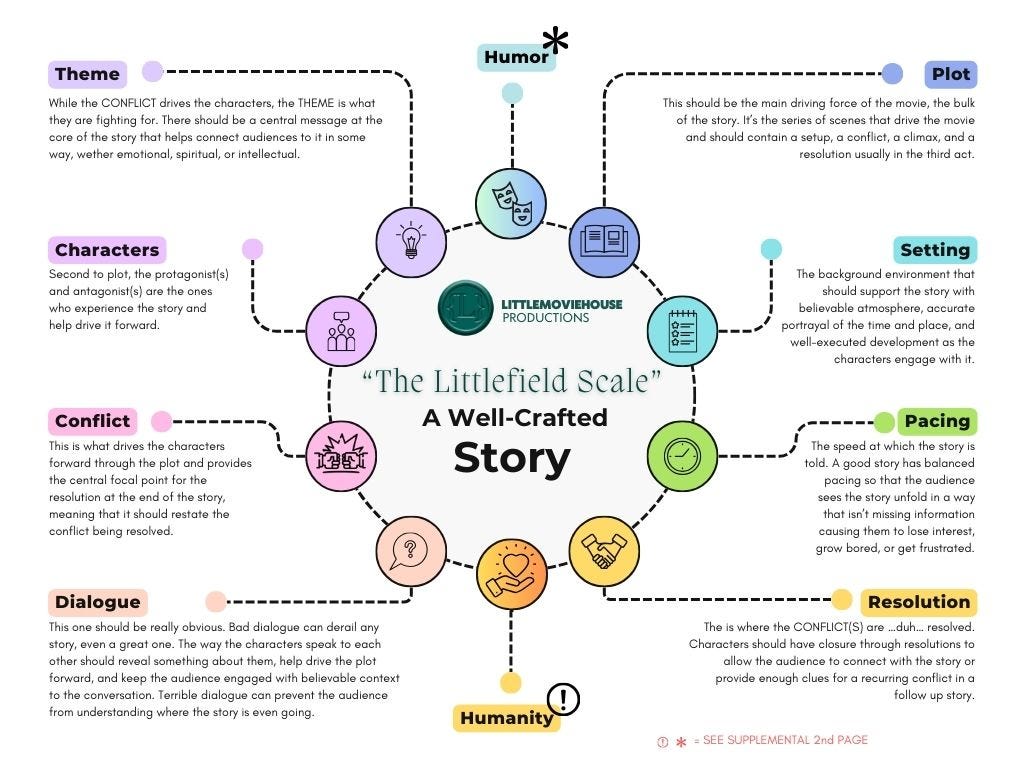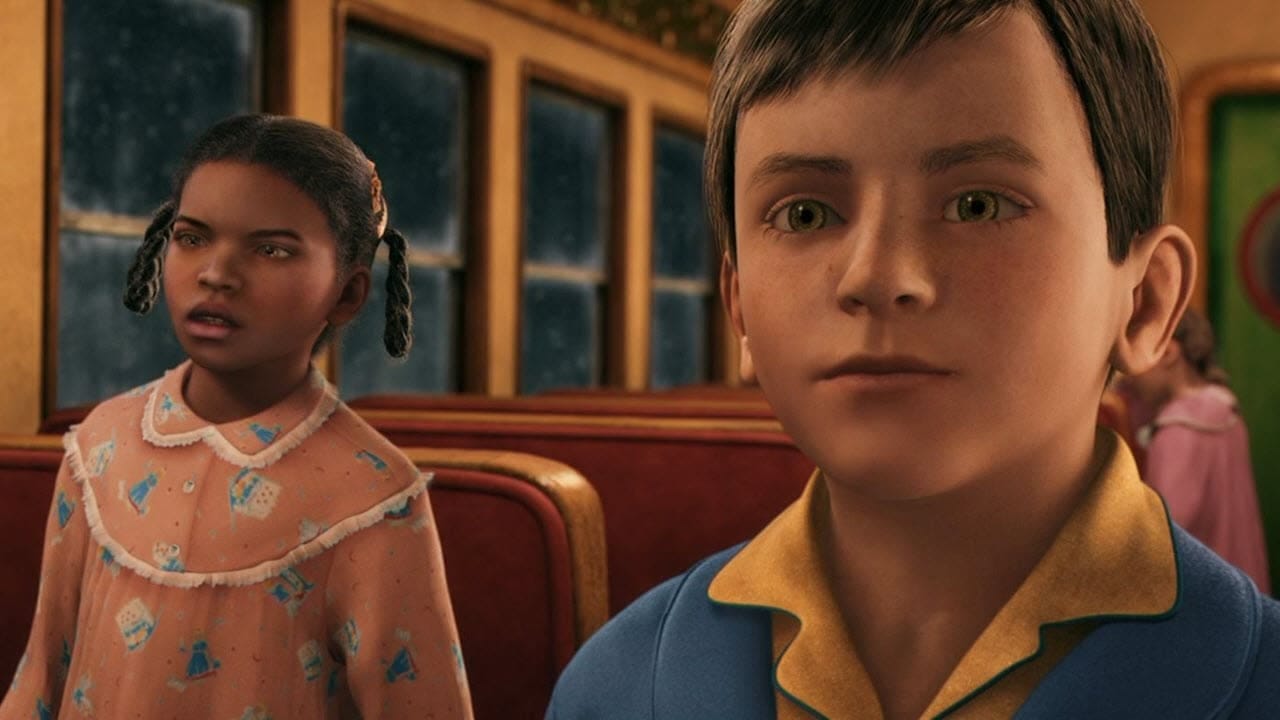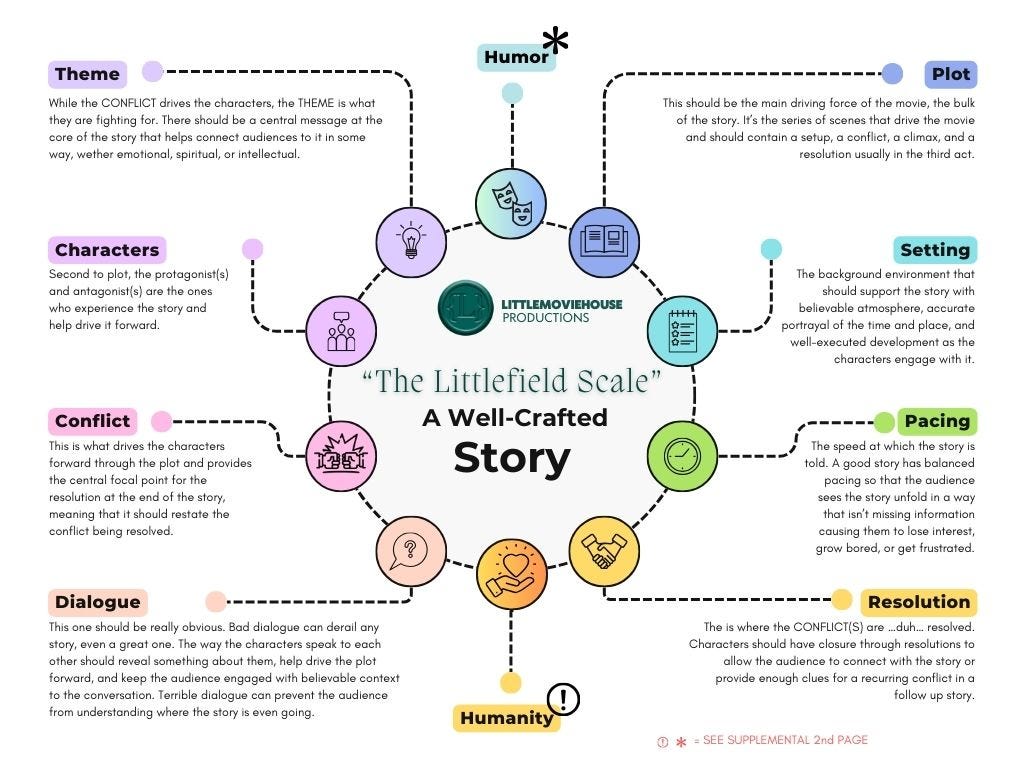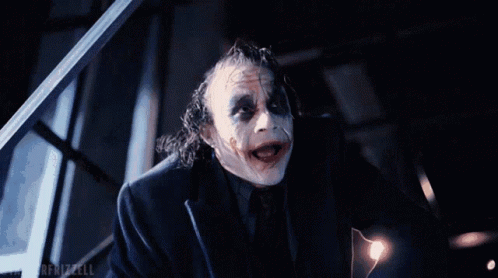[Movie Reviews] The Littlefield Scale
When offering critiques, it's my opinion so why use any other measurement but my own?
Please Note: Feel free to reference and use the Littlefield Scale for your own media/entertainment critiques. Please just credit me and link direct to this post. Thank you!
~ R. Carnie Littlefield
Thoughts Maketh Man.
We’ve all been there.
If it’s not obvious by now: I love good movies.
I love them in the way they’re re-watchable like books are re-readable.
Good movies leave us laughing, crying, yearning for more. They can make us want to discuss the themes, the score, the way the characters said their lines, or even that one funny scene that made us all lose our minds. Good movies bring people together in a way that melts barriers, warms hearts, spurns imagination, awakens dreams, and makes us feel as though we’re living in the adventure every moment across the silver screen.
Great movies leave imprints on our hearts for days, months, and perhaps even a lifetime. They can make us think deeply about the lives around us like “Awakenings” (Starring Robin Williams, 1990) did for me, they can make us question everything the way “The Matrix” (Starring Keanu Reeves, 1999) did for all of us, and they can spur many to take up the heroic mantle the way “Die Hard” (Starring Bruce Willis, 1988) did for one tv-show cop at the 99.
The point is that great movies leave impressions on us in one way or another. I know I can’t see “Schindler’s List” again or “Passion Of The Christ” for example.
While rare, truly great movies can make an impact across countries, and cultures and shape the world’s conversations for a time. The original Star Wars trilogy, for example, helped shape the entertainment culture of our country for years. Shunned and short-sighted in the 70’s; the series is now a standard in the geek/nerd nomenclature of our modern time. Good and great movies can spread like a ripple in the waters, sending waves of influence that overlap all avenues of entertainment.
People talk about them. Write about them. Podcast them, set themes, movie anniversaries, lines for book releases, etc. etc. the list goes on.
People love good stories and will spend their waking hours living in those worlds.
People bond over them, making entire personalities around great stories.
There are conventions dedicated to celebrating them, where fans dress up as their favorite characters.

I See The Writing Patterns
Movies Aren’t Great Anymore.
So you’re probably wondering “what’s the Littlefield scale if you aren’t talking about it yet??” but don’t worry, I’m getting there.
This whole thing started because I’ve been watching “The Beekeeper”(Starring Jason Statham, 2024) so many times because it’s an absolutely unhinged masterpiece of AI-written trash content that I love to hate it and want to study it. I’m truly convinced that David Ayer and the team behind this movie just put it through a few AI script generators and dusted off the printer and were like “yep, that’s good. GET JASON!”
I’m fascinated by this movie. It’s so bad that I don’t even know how it got past the dailies. The dialogue doesn’t even make sense.
It’s truly an indicator of where we are in our society and our culture when this was last year’s most hyped fight film. I started writing my review of the movie and realized that I want to break down more movies like that (most likely for my own enjoyment or one of 5 people who might see this) and they need an equal scale to do so.
Rather than just repeat/rehash a movie’s rotten tomatoes score or the IMDb rating, I’m making my own because what’s the point of offering my opinion on something if it’s not based on my own metrics?
Enter The Littlefield Scale
No, it’s not a weight thing.
I will be referring to this scale of measure from now on when I critique movies that I write about, to help me keep a standard for myself as well as share a balanced review measure that matches across all movie genres. I think it’s only fair to apply the same measures to every movie, regardless of archetype.
It’s a Values Thing.
The Littlefield Scale is broken up by Ten Values that I believe every movie should have, inspired largely by the basic components every good story should have as noted by “Screenplay: The Foundations of Screenwriting” by Syd Field, first published in 1979 . I highly recommend reading his book if you’re a writer of any stripe as it will make you appreciate constructing a story from a structural point of view.
I tend to be a very shoot-from-the-hip kind of writer and this book helped me understand the need to breakdown your story and attack it from different parts. For example, if you’re bad at creating believable dialogue, then reading the conversation out loud either with a partner or to yourself will help you “hear” the awkwardness in the phrasing so you can fix it.
If you’re a screenwriter then these values will look familiar to you. A great movie is the same as a great story and should contain all the necessary components of what makes a story worth the audience’s time: Plot, Characters, Conflict, Setting, Theme, Pacing, Dialogue , Resolution and my two additions: “Humor” and “Humanity”. I will explain them further in detail later on.
Of course, there is nuance to every type of categorizing one could do, but this is the best way that makes sense for me to keep a broader scope of my judgment of any one particular movie.
It’s designed to be a little more informative when someone’s reading my reviews than say something like IMDb’s more broad user-based ratings system that sticks to a general 1-10 scale with 10 being the best and 1 being the worst. Looking below, we get the general idea that roughly 20,000 people mostly liked the movie (an 8) while almost 3,000 people gave it a so-so rating (a 2) but there’s no information as for why.
I hope to offer a peek into why the movie would deserve a rating of 1 in my reviews, so that it’s a less abstract instance of numerical value and more informative to the context of the movie. That’s where the Ten Values come in to help give my readers an idea of where the movie might fail or succeed most, in which categories such as good plot or terrible characters.
If you’ve seen a movie with a lot of potential but the actors were struggling and chewing through their lines; what would you remember? The way the lead fumbled the action scene and delivered weak dialogue? The way the antagonist says “Now you die!” sixteen times in the first ten minutes? Or how about the red jumpers that make the henchman too bright and distracting during fight scenes?
No amount of great plot will salvage a movie that has weak values elsewhere.
The Littlefield Scale
The Ten Values Explained
PLOT: This should be the main driving force of the movie, the bulk of the story. It’s the series of scenes that drive the movie and should contain a setup, a conflict, a climax, and a resolution usually in the third act.
THEME: While the CONFLICT drives the characters, the THEME is what they are fighting for. There should be a central message at the core of the story that helps connect audiences to it in some way, wether emotional, spiritual, or intellectual. For example, in Star Wars the central theme is that “The Force Is With You, Always” and that the Force exists.
CHARACTER(S): Second to plot, the protagonist(s) and antagonist(s) are the ones who experience the story and help drive it forward. Weak characters prevent you from ever feeling immersed in what they’re doing, while great characters with defining traits and backgrounds will keep you watching over and over.
SETTING: The background environment that should support the story with believable atmosphere, accurate portrayal of the time and place, and well-executed development as the characters engage with it. For example, a scene in a dramatic story in deep space will be predicated by the lack of oxygen, extreme cold, and inability to survive without proper gear therefore writing the setting as two people casually floating around the stars would take the audience out of the scene instead of keep them engaged in the story.
CONFLICT: This is what drives the characters forward through the plot and provides the central focal point for the resolution at the end of the story, meaning that it should restate the conflict being resolved. There can be multiple conflicts in a single story, such as “man vs man”, “man vs nature”, or “man vs self” as a few examples.
PACING: The speed at which the story is told. A good story has balanced pacing so that the audience sees the story unfold in a way that isn’t missing information causing them to lose interest, grow bored, or get frustrated. The last thing an audience wants is to feel as though they’re being dragged through a plot.
DIALOGUE: This one should be really obvious. Bad dialogue can derail any story, even a great one. The way the characters speak to each other should reveal something about them, help drive the plot forward, and keep the audience engaged with believable context to the conversation. Terrible dialogue can prevent the audience from understanding where the story is even going. For example, character A says “A secret organization known as Beekeeper” and character B says “I have enough to brief the Director” instead of oh I don’t know, asking questions about this ‘secret organization’ like any normal human.
RESOLUTION: The is where the CONFLICT(S) are …duh… resolved. Characters should have closure through resolutions to allow the audience to connect with the story or provide enough clues for a recurring conflict in a follow up story. For example, when Darth Vader tells Luke he is his father (Noooooooo that’s not possible!) right before Luke falls down a trash chute and is narrowly saved from plunging to his death into the clouds. This scene resolved some of the questions we all had, but CREATED NEW CONFLICT in that resolution. Classic sequel storytelling.
HUMOR: Is the story fun, funny, or endearing in any way? Even the darkest stories can be elevated with a little bit of humor and comedy such that they remain enjoyable beyond the basic premise of the genre. For example, “Scream” (Starring Neve Campbell, 1996) is a landmark movie of it’s genre because it actively celebrates horror movie tropes while pointing them out as the characters are dying in the silliest ways. It’s a slasher flick by all accounts, but the comedy is what makes it memorable. “STOP IT MAN! I can’t take it anymore. I’m feelin’ a little WOOZY here!”
And finally, the Tenth Value HUMANITY: This is the most important value that I will hold true no matter what else the movie may be missing. This value is unique against all the others in that it has almost nothing to do with the context of the movie. This value is about the abhorrent use of AI and replacing qualified actors, animators, photographers, and a thousand other valuable jobs that it takes to turn a script into a movie. I will call out the use of AI in every instance that I can, and speak against in where it matters most. I hate the concept of AI when used to replace true artists.
Something Something didn’t stop to think if we should…
A Note on AI
Before all the AI Bros come reeeeeee on my post, let me be clear that I agree that there’s a place for AI in a lot of industries, such as automotive repair where it would be dangerous for a person to do the job, or the medical field where AI scanners can detect cancers faster and safer than an invasive operation ever would; but there is no place for AI in the creative fields when and where an actual human artist could do it. This is my stance until the day that I die. I have made my mistakes using AI imagery in the past but I think there needs to be a hardline in the sand that we as Creatives choose. I’ve seen the degrading quality of music with the power of AI behind it, and I don’t want that to be the future of movies.
What I mean by that is that humans are still at the core of the story.
The moment we start removing humans from the creative process entirely such as having AI scriptwriters; the entire thing falls in on itself. The point of having the innate desire to create and be creative is to produce something creative, not to allow some algorithm or mathematical equation to do it for you. While I think there’s some value in implementing AI in things you do as a creative person, such as generating a landscape for your video game characters, there will always be an artist better qualified for the job.
My Values Scale is entirely based on the trends I’m seeing in a lot of social media, which tends to be the ripple before the same trends are seen within the larger entertainment industry like Hollywood. It picks up on trends set by those online, such as TikTok dances that go viral and then are choreographed into a music video or the next movie. AI is becoming part of the conversation faster than any of us know how to wield it and I’m afraid that it’s going to leak into the creative process outside of the original intents. For example, there are websites that offer stylized, stereotypical “AI voices” for you to buy and implement into your music, instead of singing it yourself or hiring a professional singer. The website that I saw advertised on Instagram claims and promotes “over 80 AI Voices to fit your needs” and allows you to play a little sample of the voice.
The “Uncanny Voice Valley”
I can’t explain the chills I got and not in a great way when listening to these sampled AI voices. It’s something I want to call “the Uncanny Voice Valley” that’s similar to the effect of the Uncanny Valley (Wikipedia link)
The audio sounded like it’s supposed to, in terms of the music genres they’re trying to sell, but it just didn’t feel right to me. Much in the same way that the UV effect is something that you can’t inherently point out but your eyes track and your brain senses what is missing: actual human features. Bad CG like the weird characters in “The Polar Express” (Starring Tom Hanks, 2004) are the reason the UV exists, where human faces and features are attempted but the technology wasn’t quite there yet at the time to fulfill the desired effect of looking completely real.
I mean what are these faces:
As AI gets more and more convincing, the UV becomes less and less of a valley and more like a small ravine, and I’m afraid the same is true of vocal talent and AI voices. It’s still apparent to me when looking at CG vs. real humans but with technology like the Reface App and deepfakes becoming clearer and cleaner; this is becoming harder and harder.
“AI is a tool” You’re a tool.
I can hear the screams and excuses. “What if you can’t sing?” or “What if you can’t draw?”
Well then I think you have a lot of problems you need to address before trying to make a music track and release it online or make a comic book and try to sell it. Such as learning how to sing or drawing a human figure or basic anatomy. Everyone is forgetting that AI had to be trained on something and that SOMETHING was the talent and hard work of millions of artists and creatives that were truly inspired by something genuine and unique, not a mathematical equation.
At it’s core, AI Art is theft.
I have notebooks upon notebooks of hands, arms, legs, feet, finger positions, etc. because I had to train myself on proper anatomy in order to know when I was doing it wrong or right. It’s ironic to me that the ONE thing AI still gets all wrong is fingers and toes.
Yes, I agree that AI can be a great tool when used properly but I don’t think anyone is even asking that question.
“How can we use AI properly and safely?”
So what now? I have so many movies to review.
And… here… we… go!
I’d like to thank David Ayer and his movie The Beekeeper for inspiring me to create this scale, the desire to analyze the batshit crazy movie, and the motivation to comment on today’s movie industry as a whole. I’m really excited to talk about movies and hopefully those that find this will be really excited to share their opinions about those movies too.
Leave me a comment!!
•••
Love,





